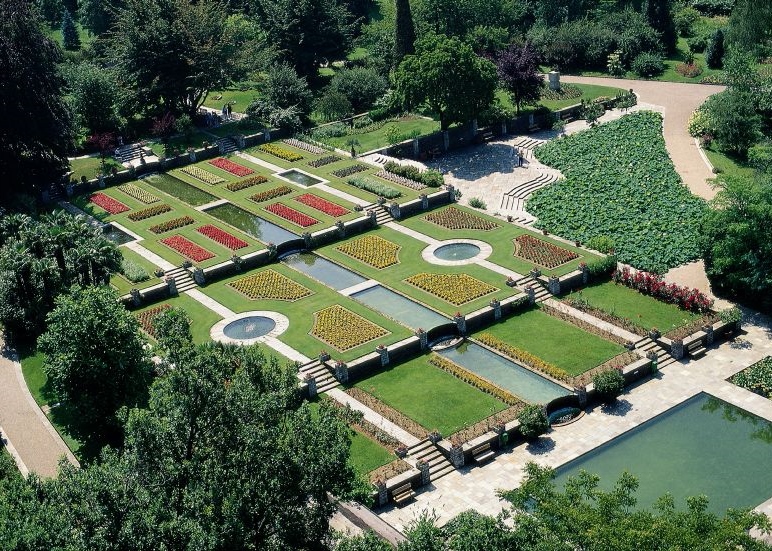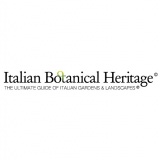
 Italian Botanical Heritage
Italian Botanical Heritage
Italian gardens: Villa Taranto Botanical Gardens
- WTI Magazine #103 May 19, 2018
-

 Italian Botanical Heritage
Italian Botanical Heritage
The Gardens of Villa Taranto are located on the promontory of Castagnola, along the road that connects Pallanza to Intra, on the western shore of Lake Maggiore.
They were created by Neil Mc Eacharn (1184-1964), a captain of Scottish origin, a great lover of botany and Italy, which he had visited in his youth. In 1928 McEacharn returned to Italy with the intention of finding a suitable plot of land for the creation of a vast garden, but without finding it. In 1930, after having published an advertisement for this purpose in the British newspaper The Times, he identified and purchased the property La Crocetta and its villa, built in 1880 by Count d'Orsetti for the Ticino architect Augusto Guidini (former author of Villa Scagliola), in a style inspired by Normandy architecture, and in need of restoration.
The park that surrounded it was smaller than the current one, mainly made up of chestnuts, robinia and bamboo. Captain McEacharn had already a considerable experience in the botanical field working in the vast park of his Castle of Galloway in Scotland. He immediately renamed the vast property Villa Taranto, in honor of his ancestor McDonald, appointed Duke of Taranto by Napoleon, and devoted himself to its accommodation with all his enthusiasm, his expertise and a large part of his personal heritage.
The work took thirty years and over 100 workers. The area dedicated to the gardens was almost doubled, with the purchase of neighboring properties. The vegetation was largely uprooted. A water system was created with water pumped from the lake, distributed to the gardens through a network of 8 km of pipes. An artificial valley was dug for crops that needed a protected and shady climate, terraced gardens were created for crops to be placed in full sun and arranged over 7 km of avenues. Finally, countless botanical species were planted, which led Captain McEacharn to travel several times around the world to find seeds and plants and stimulated gardeners and floriculturists in the area to grow species hitherto unknown.
The importance of the garden is not only given by its botanical heritage, even if very rich, but also by the harmony of the whole, in which the English imprint is enriched by the insertion of typical elements of the Italian garden.
The gardens, donated by Captain McEacharn to the Italian State, were opened to the public for the first time in 1952. When he died in 1964, he was buried in a chapel, specially built in the middle of the garden. The Botanical Gardens of Villa Taranto was established for the management of the park. Today the gardens are part of the Great Italian Gardens circuit; the villa cannot be visited by the public and since 1996 it has been the seat of the Prefecture of Verbano Cusio Ossola.
The gardens today
The Gardens of Villa Taranto extends over 16 hectares, with 7 km of avenues. It has 20,000 plants, including 80,000 blooming bulbs in spring, more than 150,000 ground cover plants, tree and shrub collections from all over the world, some of which are unique in Europe and acclimatized after a long period of work.
There are many significant places in the gardens. The "Valletta" was built in 1935 and surmounted by a bridge with a single arch. The large "terraced gardens" have waterfalls and water games alternating with flowerbeds of annual plants: here is the bronze statue of the Fisherman, by Neapolitan Vincenzo Gemito. The "Winter Garden" hosts the greenhouse for the shelter of Mediterranean plants, an impressive arboretum dedicated to tropical and subtropical plants, including the Victoria cruziana, the huge equatorial water lily, whose seeds arrived at Villa Taranto in 1956 from the Stockholm botanical garden. One of the most impressive places is the basin of lotus flowers (Nelumbo nucifera). The "Labyrinth of the dahlias" has more than 1500 plants of dahlias belonging to about 350 varieties. Rcently 30,000 mosses were planted. The "Captain's Herbarium" is the final masterpiece, located in a building next to the entrance.
In August 2013, the Gardens were severely damaged by a tornado, which uprooted almost 800 plants and damaged the greenhouses, then rebuilt, but the resulting new space has allowed to plant new collections.
Among the innumerable significant species present in the Gardens we remember: